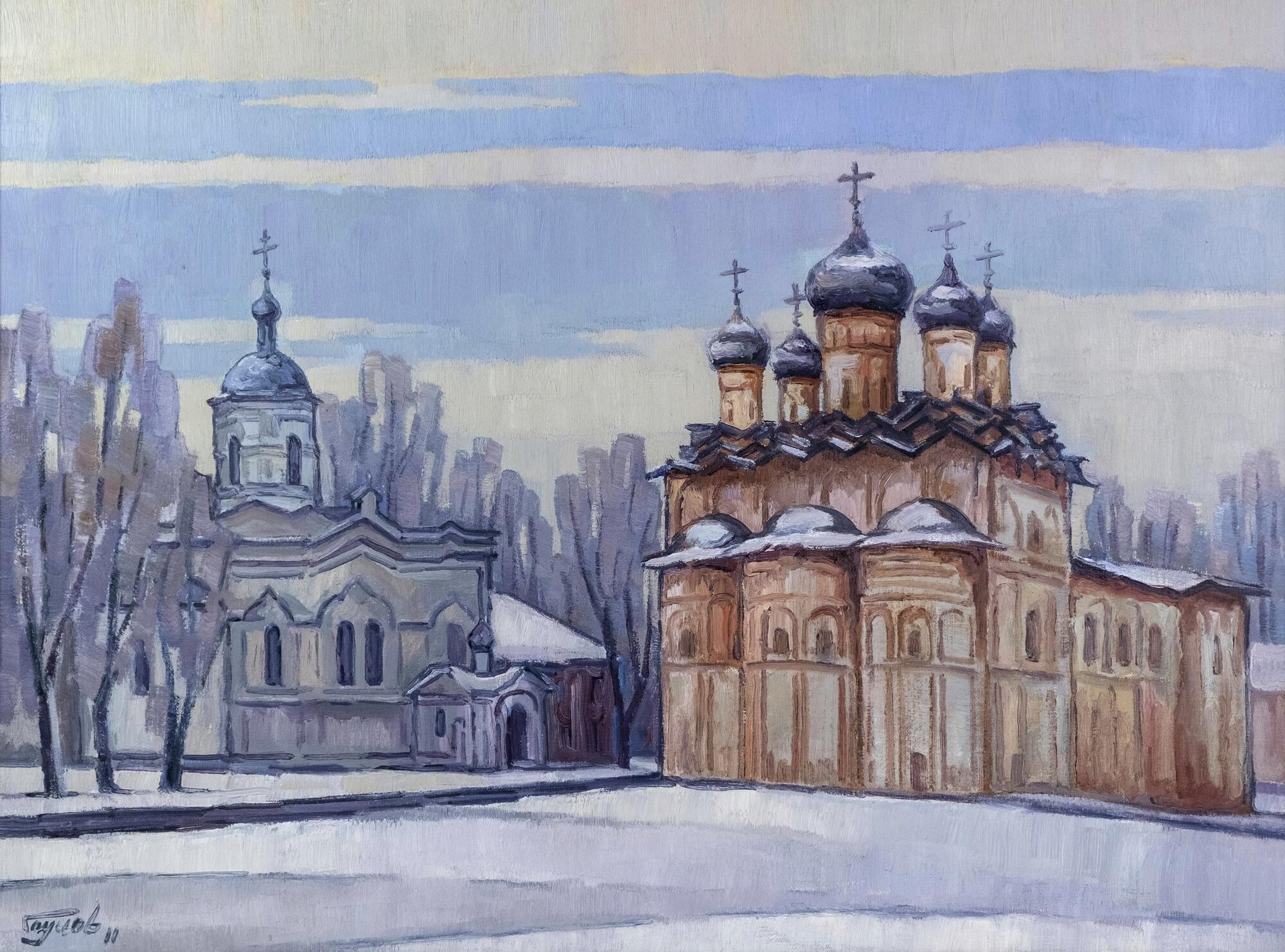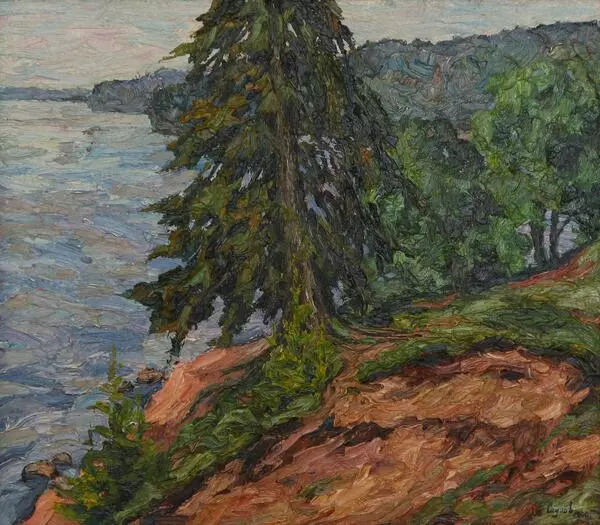The Monastery of the Holy Spirit, founded in the pre-Mongol period, is first mentioned in the chronicle of 1162 in connection with the consecration of Hegumen Savva. By that time, the monastery was almost as important as the Yuriev, Vyazhishchi, Khutyn and Antoniev monasteries.
The stone Cathedral of the Descent of the Holy Spirit, the central one in the ensemble, was laid under Archbishop Moses in 1357, before that all the buildings were wooden. This event is the second in the history of the monastery that is reflected in chronicles.
In 1386, the monastery, among others, was burned down by the Novgorodians, when the troops of the Moscow Prince Dmitry Donskoy approached the city.
Around 1557, at the behest of Hegumen Jonah, a five-domed pillarless Trinity Church with a refectory, underground rooms and a basement were built there. Elegant proportions, the décor of wooden domes and original brickwork make it one of the most remarkable architectural monuments of the mid-16th century.
By 1582, there were three stone churches: the Trinity, the Holy Spirit and the St. Nicholas the Wonderworker ones.
During the Swedish occupation (1611–1617), the monastic cells were burned down, the fence was destroyed, and the churches were looted, but the inventory of 1617 again mentions rich interiors of the churches. In 1685, the monastery was damaged in a fire. In 1764, it was listed as a third-class one (according to a system of classification of monasteries in Russia).
In 1786, the Holy Spirit Monastery was abolished (the monks were sent to the Valaam Monastery) and reopened as a convent.
In the 19th century, a new chapter in its history began: with the efforts of Abbess Maximilla, stone churches, cells, a bell tower and a fence with towers appeared there; Emperor Alexander I contributed to the restoration of the monastery by donating 10,000 rubles to it.
In 1834, the monastery became the first class one according to the classification introduced by Catherine II.
In the 1920s, the monastery was closed, and a city street ran through its lands.
Now, the State Archive is located on its territory, but a detailed inventory made in 1919 allows to recreate the lost appearance of the ensemble: the bell tower, the Church of St. John the Theologian, a roadside chapel and a fence in the classical style with porticos, pilasters and capitals.
The artist Oleg Nikolaevich Saulov is a member of the Artists’ Union of Russia, a corresponding member of the Petrovsky Academy of Sciences, and a frequent participant of regional, interregional, and all-Russian exhibitions and plein-airs. A native of Kirishi, Leningrad Oblast, since 1989, he has been living and creating in Veliky Novgorod. His works are exhibited, among others, in the State Museum of Arts and Culture of the Novgorod Land.
The stone Cathedral of the Descent of the Holy Spirit, the central one in the ensemble, was laid under Archbishop Moses in 1357, before that all the buildings were wooden. This event is the second in the history of the monastery that is reflected in chronicles.
In 1386, the monastery, among others, was burned down by the Novgorodians, when the troops of the Moscow Prince Dmitry Donskoy approached the city.
Around 1557, at the behest of Hegumen Jonah, a five-domed pillarless Trinity Church with a refectory, underground rooms and a basement were built there. Elegant proportions, the décor of wooden domes and original brickwork make it one of the most remarkable architectural monuments of the mid-16th century.
By 1582, there were three stone churches: the Trinity, the Holy Spirit and the St. Nicholas the Wonderworker ones.
During the Swedish occupation (1611–1617), the monastic cells were burned down, the fence was destroyed, and the churches were looted, but the inventory of 1617 again mentions rich interiors of the churches. In 1685, the monastery was damaged in a fire. In 1764, it was listed as a third-class one (according to a system of classification of monasteries in Russia).
In 1786, the Holy Spirit Monastery was abolished (the monks were sent to the Valaam Monastery) and reopened as a convent.
In the 19th century, a new chapter in its history began: with the efforts of Abbess Maximilla, stone churches, cells, a bell tower and a fence with towers appeared there; Emperor Alexander I contributed to the restoration of the monastery by donating 10,000 rubles to it.
In 1834, the monastery became the first class one according to the classification introduced by Catherine II.
In the 1920s, the monastery was closed, and a city street ran through its lands.
Now, the State Archive is located on its territory, but a detailed inventory made in 1919 allows to recreate the lost appearance of the ensemble: the bell tower, the Church of St. John the Theologian, a roadside chapel and a fence in the classical style with porticos, pilasters and capitals.
The artist Oleg Nikolaevich Saulov is a member of the Artists’ Union of Russia, a corresponding member of the Petrovsky Academy of Sciences, and a frequent participant of regional, interregional, and all-Russian exhibitions and plein-airs. A native of Kirishi, Leningrad Oblast, since 1989, he has been living and creating in Veliky Novgorod. His works are exhibited, among others, in the State Museum of Arts and Culture of the Novgorod Land.







